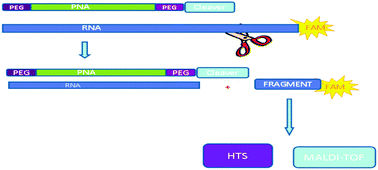PNA-based artificial nucleases as antisense and anti-miRNA oligonucleotide agents†
Abstract
Because of its interesting chemical, physical and biological properties,

* Corresponding authors
a
Environmental Sciences Department, SUN, 81100-Caserta, Italy
E-mail:
anna.messere@unina2.it
b Life Sciences Department, SUN, 81100-Caserta, Italy
c Biological Science Department, University of Naples ‘Federico II’, 80138–Naples, Italy
Because of its interesting chemical, physical and biological properties,

 Please wait while we load your content...
Something went wrong. Try again?
Please wait while we load your content...
Something went wrong. Try again?
M. Gaglione, G. Milano, A. Chambery, L. Moggio, A. Romanelli and A. Messere, Mol. BioSyst., 2011, 7, 2490 DOI: 10.1039/C1MB05131H
To request permission to reproduce material from this article, please go to the Copyright Clearance Center request page.
If you are an author contributing to an RSC publication, you do not need to request permission provided correct acknowledgement is given.
If you are the author of this article, you do not need to request permission to reproduce figures and diagrams provided correct acknowledgement is given. If you want to reproduce the whole article in a third-party publication (excluding your thesis/dissertation for which permission is not required) please go to the Copyright Clearance Center request page.
Read more about how to correctly acknowledge RSC content.
 Fetching data from CrossRef.
Fetching data from CrossRef.
This may take some time to load.
Loading related content
